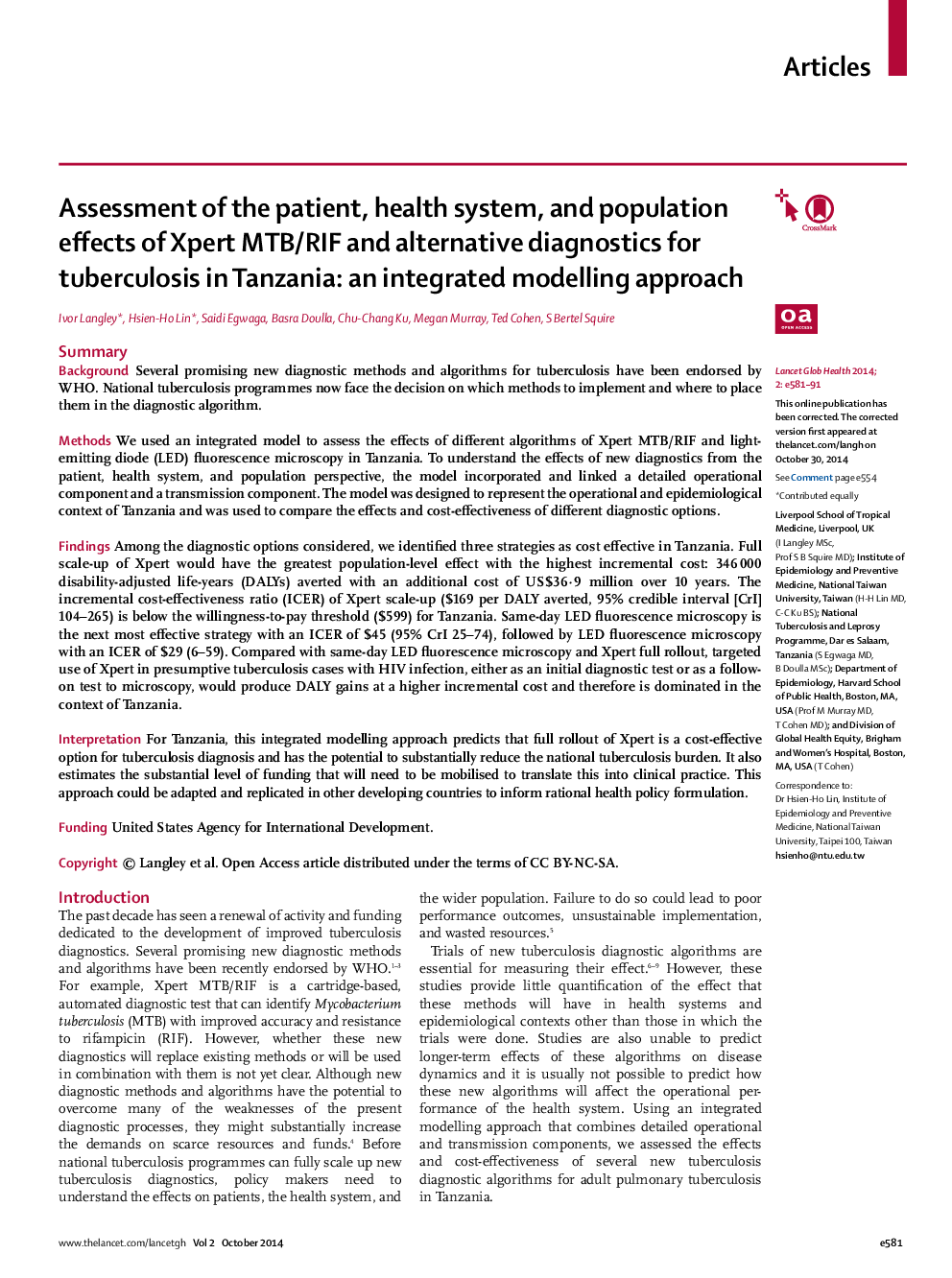| Article ID | Journal | Published Year | Pages | File Type |
|---|---|---|---|---|
| 3409337 | The Lancet Global Health | 2014 | 11 Pages |
SummaryBackgroundSeveral promising new diagnostic methods and algorithms for tuberculosis have been endorsed by WHO. National tuberculosis programmes now face the decision on which methods to implement and where to place them in the diagnostic algorithm.MethodsWe used an integrated model to assess the effects of different algorithms of Xpert MTB/RIF and light-emitting diode (LED) fluorescence microscopy in Tanzania. To understand the effects of new diagnostics from the patient, health system, and population perspective, the model incorporated and linked a detailed operational component and a transmission component. The model was designed to represent the operational and epidemiological context of Tanzania and was used to compare the effects and cost-effectiveness of different diagnostic options.FindingsAmong the diagnostic options considered, we identified three strategies as cost effective in Tanzania. Full scale-up of Xpert would have the greatest population-level effect with the highest incremental cost: 346 000 disability-adjusted life-years (DALYs) averted with an additional cost of US$36·9 million over 10 years. The incremental cost-effectiveness ratio (ICER) of Xpert scale-up ($169 per DALY averted, 95% credible interval [CrI] 104–265) is below the willingness-to-pay threshold ($599) for Tanzania. Same-day LED fluorescence microscopy is the next most effective strategy with an ICER of $45 (95% CrI 25–74), followed by LED fluorescence microscopy with an ICER of $29 (6–59). Compared with same-day LED fluorescence microscopy and Xpert full rollout, targeted use of Xpert in presumptive tuberculosis cases with HIV infection, either as an initial diagnostic test or as a follow-on test to microscopy, would produce DALY gains at a higher incremental cost and therefore is dominated in the context of Tanzania.InterpretationFor Tanzania, this integrated modelling approach predicts that full rollout of Xpert is a cost-effective option for tuberculosis diagnosis and has the potential to substantially reduce the national tuberculosis burden. It also estimates the substantial level of funding that will need to be mobilised to translate this into clinical practice. This approach could be adapted and replicated in other developing countries to inform rational health policy formulation.FundingUnited States Agency for International Development.
